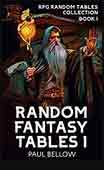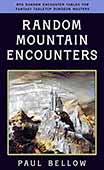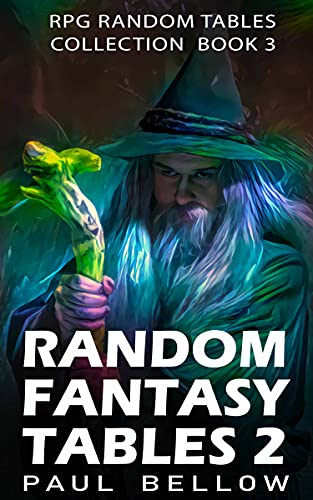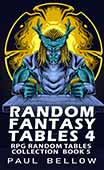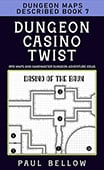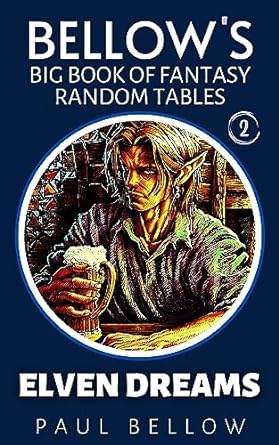There’s a magic in watching a player’s eyes light up when their character’s history suddenly becomes central to a campaign’s unfolding drama. As the tools of the tabletop—dice, minis, maps—evolve, so too do the ways we create our heroes’ origins. The rise of powerful AI character generators means a wave of heroes and antiheroes with complex, sometimes labyrinthine, backstories now enters the field. These auto-crafted personal histories dazzle with unexpected twists, labyrinthine relationships, or cryptic portents. For DMs, they are a matrix of potential, a treasure map waiting to be unfurled.
But here’s the rub: a generated D&D backstory can be so lush, so jam-packed with detail, that it risks feeling just out of sync with the campaign’s living pulse. Maybe a character’s tragic former mentor hails from a land you never planned to visit, or a generational curse is entirely at odds with your world’s lore. The challenge then is clear—how can a storyteller forge these modular fragments into narrative gold, ensuring they fuel the main quest rather than spiral into discordant sidebars?
Enter the skilled Dungeon Master, equal parts alchemist and architect. With a careful hand and an open mind, DMs can treat generated backstories not as prescriptive blueprints, but as an inspiration wellspring. Adaptation is key: tug on a thread here, trim extraneous lore there, recast a villain into a recurring agent of chaos, or let a forgotten prophecy echo through the campaign’s major beats. These stories are not locked boxes—they’re puzzle pieces meant to be shaped, shifted, and layered into the grander mural.
The process, at its heart, is collaborative and practical. This isn’t a contest between player and DM, nor a rigid checklist to be completed. It’s a dance. Player and DM, together, nurture something greater than the sum of its parts. When done right, integrating generated backstories transforms both the mechanics of a campaign and its emotional resonance, resulting in an experience that’s richer, more cohesive, and worth remembering.
Understanding the Role of Generated Backstories
Generated backstories are a unique beast. Unlike hand-crafted, meticulously plotted character histories, those spun from generators or AI often brim with recursion and surprise—the equivalent of rolling on a hundred tables at once and blending the results. These histories can range from epic sagas of lost royalty to peculiar tales where a character’s greatest nemesis is their own time-displaced shadow. They rarely shirk on ambition or detail, and sometimes, they produce results neither player nor DM expects.
This unpredictability can be both a boon and a burden. Unlike self-written origins, generated stories sometimes stretch into territory the player didn’t consciously choose or even understand at first blush. This can create moments of delightful spontaneity—a twist of fate the player gets to unravel in real time. It can also be a source of disconnection, as some generated elements may sit awkwardly alongside a campaign’s established tone or lore.
Try my AI Tabletop RPG generators...and an extensive library of content!
For the DM, the first and most vital step is immersion—reading through the backstory in its entirety, marinating in its moods, and mapping out the foggy edges. Look for recurring themes: Are there multiple betrayals? Repeated references to lost artifacts? A motif of duality or sacrifice? Zero in on unresolved traumas or mysterious characters who seem ripe for promotion to NPCs. Sometimes, a name or event tossed into a random backstory paragraph holds the seed for an entire saga.
Most importantly, treat the backstory as raw material rather than canon. Your role isn’t to force every detail into the campaign but to pluck what sings, tune what’s out of key, and craft a symphony that matches the world’s tone and needs. Some players may only remember fragments of their generated history—use these as footholds. Let the rest serve as a smorgasbord from which to assemble narrative gold.
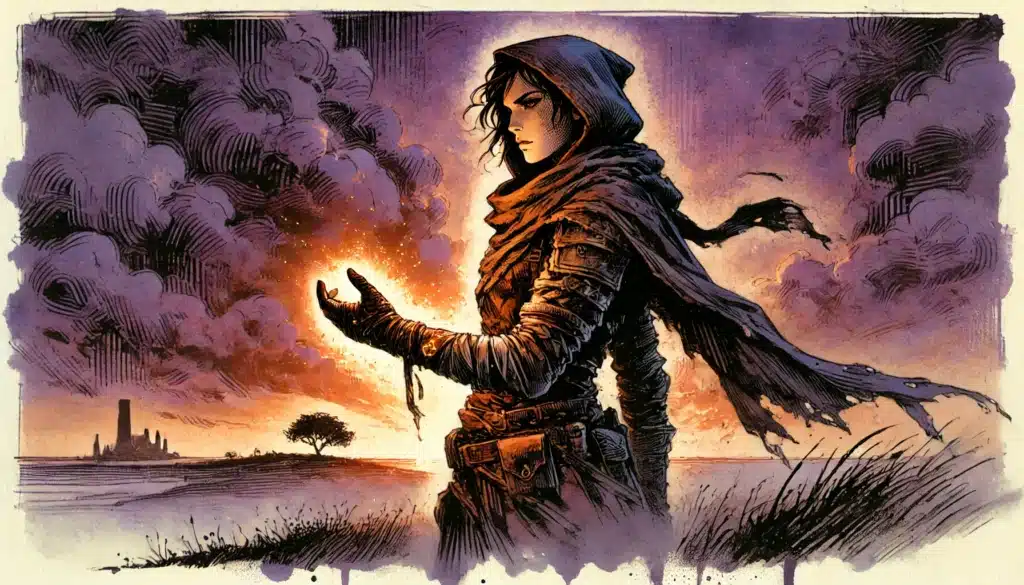
Identifying Hooks and Threads
Extracting meaningful hooks from a densely generated backstory is a bit like panning for gold—the treasure lies in the silt, waiting for a careful hand. Rather than wrestling every outlandish detail onto the stage, a DM can sift for patterns: Who or what has the emotional weight to drive a scene? Where are the story’s unanswered questions? These questions become the scaffolding for campaign integration.
Start by seeking out natural “hotspots”—the villain who stole the family sword, the guild that cast out the PC, the ancient order leaving cryptic prophecies in their wake. Anything left unfinished or enigmatic is an invitation to tie the campaign’s stakes to the character’s history. Be ready to transform background elements into real-time story beats—turn a casual mention of a rival into a flesh-and-blood antagonist, or a mentor’s mysterious disappearance into the catalyst for an urgent quest.
⚔️ Fantasy RPG Random Tables Books
Make life as a Gamemaster easier…
If you play Dungeons & Dragons, Pathfinder, or other fantasy RPGs, this
RPG random tables series
is packed with encounters, NPCs, treasure, and more. Available in eBook or print—either way, you’ll have a wealth of adventure ideas at your fingertips.
Generated content can be tantalizingly vague or outlandish. DMs shouldn’t shy away from asking the player clarifying questions: Was that “lost city” literal or metaphorical? Is the “mysterious benefactor” sinister, or genuinely benevolent? Nail down the tone and genre with the player’s help; ambiguity can be delicious, but clarity gives you the freedom to improvise.
The final trick is modular thinking. You don’t need to weave every hook into the main arc simultaneously. Use some as flavor, others as side quests, and save a few for high-level reveals. In short, treat each backstory thread as a tool to deepen the campaign, not derail it.
18+ Common Story Hooks Found in Generated Backstories:
- A forgotten prophecy tied to the PC’s bloodline
- A family heirloom with a hidden magical property
- An ex-lover turned ruthless antagonist
- Debts owed to shadowy criminal organizations
- A childhood friend who’s vanished under suspicious circumstances
- A vengeful spirit haunting the family estate
- Membership in a secret order, now demanding a favor
- Rival guilds seeking to recruit or ruin the character
- A sibling who chose a darker path and became infamous
- An ancestral feud reignited by recent events
- A bounty on the character’s head from a distant land
- A mentor imprisoned for forbidden knowledge
- A creature spared in the past, now returning in need
- A misinterpreted prophecy threatening the innocent
- A stolen relic that starts resurfacing clues
- Blackmail letters with escalating demands
- Unknown parentage hinting at noble or monstrous origins
- Forgotten debt leading to cross-continental pursuit
- A forbidden romance with catastrophic political implications
- Cursed armor that reveals its secrets over time
Treat these hooks like keys—unlocking new layers in your campaign as side quests, layered arcs, or even endgame revelations. Think of backstory integration as seasoning: too much at once can overwhelm, but used judiciously, players will feel seen and their characters essential to the unfolding world.
The deepest joy for many players is seeing their origins ripple out into the campaign at large—when their rival is the villain behind the throne, or their lost relic suddenly matters on a geopolitical scale. Masterful integration not only strengthens individual engagement but creates a world that feels reactive, alive, and intricately woven.
Adapting for the Main Storyline
Weaving backstory elements into the larger campaign is both art and science. Consider villains: an adversary who once double-crossed the PC might now resurface as a captain of the city watch, or the puppetmaster behind a series of heists. A throwaway reference to a “cursed village” could balloon into the focal point of an entire story arc. Generated hometowns, mysterious family members, or dark secrets offer modular plot devices to scale up or down, depending on the narrative need.
The when is as important as the how. Springing too many personal revelations at once can splinter group cohesion, with each PC yanked on a separate tangent. Instead, stagger the integration—thread personal arcs into the main quest, let one player’s hook take the foreground while others simmer in the background. A well-timed note, a chance encounter, or a recurring nightmare drops breadcrumbs, drawing the group’s attention without monopolizing the spotlight.
Think of personal story integration in terms of genre tension and pacing. When the party needs emotional depth or a break from dungeon delving, sprinkle in a backstory reveal—an ambush by the rival guild, a letter from a lost mother, or a vision from an ancient ancestor. The main arc isn’t disrupted; it’s enriched, taking on new stakes and flavor.
The magic happens when individual and party quests intertwine. A backstory villain can menace the entire group, a familial curse might threaten the broader world, or a mysterious relic draws enemies and allies alike. These shared stakes ensure that while one character’s history may take the lead, everyone feels the ripple effects.
| Backstory Element | Campaign Integration Idea | Timing Suggestion | Potential Consequences |
|---|---|---|---|
| Estranged twin sibling | Arrives as new antagonist’s henchman | Mid-arc reveal | Party divided by loyalty dilemma |
| Haunted family manor | Dungeon locale holding key quest item | When party needs rest | PC faces past trauma; ghosts spill secrets |
| Ex-guild membership | Guild offers party illicit deal | Before big heist | Moral quandaries; new patron/enemy |
| Lost magical heirloom | Item required for main quest ritual | Campaign midpoint | PC becomes central to group objective |
| Forgotten prophecy | Villain attempts ritual involving PC | Finale lead-in | PC’s destiny tied to world’s fate |
| Debt to underworld boss | Boss offers information for a risky task | Early side quest | Ongoing favors owed; party entanglement |
| Betrayed mentor | Mentor now works for rival faction | Antagonist reveal | Emotional betrayal; potential redemption |
| Village burned in childhood | Ruins contain clue to artifact | Mid-campaign detour | Grief resurfaces; new enemies arise |
| Secret noble birth | NPC allies discover PC’s lineage | Court intrigue arc | Blackmail or political ascendancy |
| Monster offspring | Monster threatens town—PC must negotiate | Mid-level side arc | Ethical dilemmas; town alliances shift |
Well-integrated backstory arcs never fracture the campaign—they unify it with strands of emotional and narrative investment. Rotate the spotlight: in one chapter, a rogue’s lost love returns; next, the cleric’s prophecy threatens the land. This rhythmic pacing keeps the story coherent and avoids devolving into a series of personal vignettes.
Revelations should be paced carefully, with player buy-in and anticipation. Integrating backstories isn’t about racing for a “main character” moment, but about folding in each piece so the tapestry is vibrant, complex, and unbreakably strong.
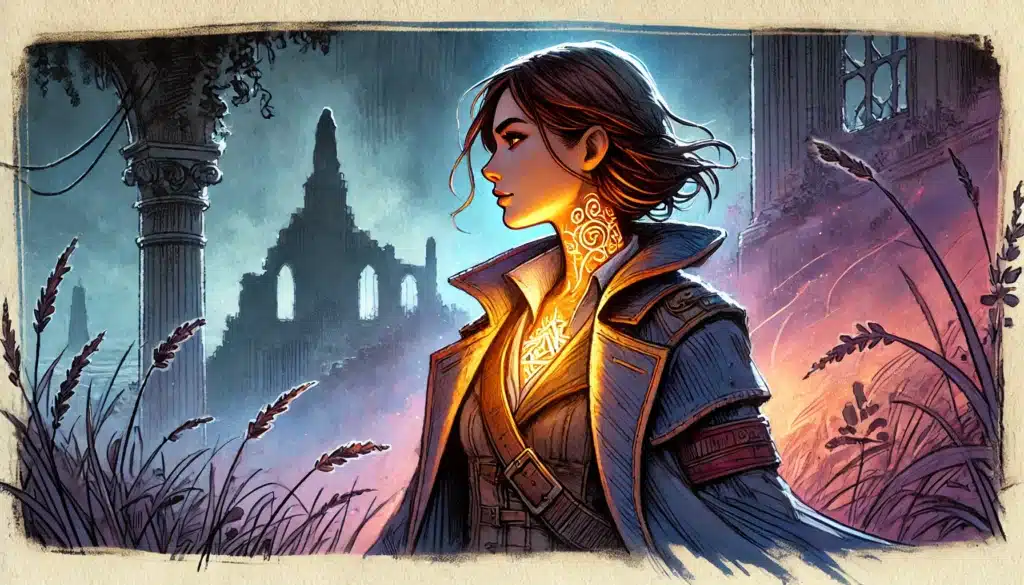
Maintaining Player Agency
It’s easy to get swept up in the tidal wave of possibilities that a meaty backstory provides. But underneath all the clever integration, one rule reigns supreme: the character’s core belongs to the player. No matter how juicy a plot twist, the player’s sense of identity and authorship must remain unbroken, or the drama will quickly curdle into dissonance or resentment.
⚔️ Fantasy RPG Random Tables Books
Make life as a Gamemaster easier…
If you play Dungeons & Dragons, Pathfinder, or other fantasy RPGs, this
RPG random tables series
is packed with encounters, NPCs, treasure, and more. Available in eBook or print—either way, you’ll have a wealth of adventure ideas at your fingertips.
Twists and surprises are fair game, but the character’s backstory arc should never feel like it’s been hijacked. Discuss major changes, new revelations, or retcons collaboratively. If your adaptation steers too far off course, invite the player to help recalibrate. This isn’t just respectful; it results in more organic, satisfying stories.
“Yes, and…” is your watchword. If new details emerge—a lost sister now wielding a villain’s blade, a stolen artifact with a darker power than first conceived—layer them onto what’s already there, rather than overwriting or erasing. Improvise together, leaving breadcrumbs and inflection points where the player’s choices can shape the evolution.
When in doubt, slow the pace and check in. Not every twist must be cataclysmic. Sometimes a slow-burning reveal, a back-and-forth dialogue about tone, or an invitation for the player to define a crucial NPC’s next move, makes all the difference.
14+ Strategies for Protecting Player Agency During Backstory Integration:
- Offer meaningful choices at every key plot development.
- Reveal information gradually, not all at once.
- Solicit player input on the motivations or goals of major NPCs.
- Allow for collaborative retconning when new hooks emerge.
- Use “yes, and…” to build on, not override, existing details.
- Check in with the player before introducing major trauma or loss.
- Give players veto power over particularly personal elements.
- Frame mysteries so the player defines the solution’s tone or consequences.
- Let the player decide whether to confront or avoid specific adversaries.
- Use flashbacks and dream sequences narrated by the player.
- Leave ambiguous elements for the player to define in-session.
- Reward initiative when the player fleshes out their own threads.
- Respect boundaries for themes like family, loss, or revenge.
- Invite the player to help design pivotal scenes or confrontations.
- Rotate focus so no one PC’s backstory dominates too long.
- Provide alternative quest solutions tied to the backstory.
- Allow the player to introduce their own “callback” moments.
When players see that their agency is paramount, they become empowered storytellers alongside you. Rather than passengers on your narrative train, they become invested collaborators—enriching, surprising, and steering the plot toward unexpected brilliance.
Trust is the linchpin. Players need to feel ownership, not just over their character’s stats, but over their history and future trajectory. That trust, carefully nurtured, unlocks the highest form of D&D storytelling—the campaign where everyone, DM and players alike, is eager to discover what happens next.
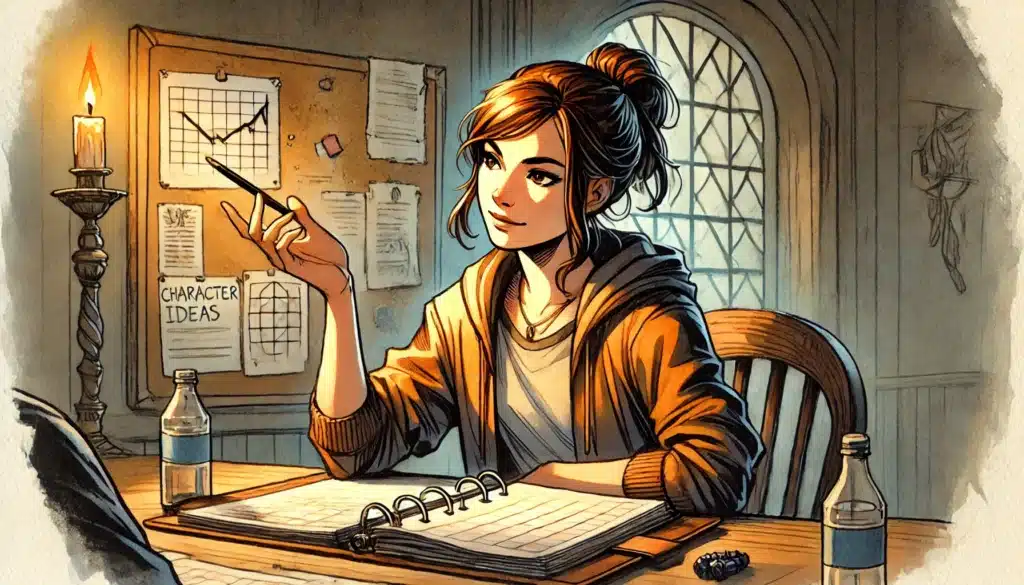
When to Share, When to Surprise
There’s a fine and thrilling line between weaving a player’s backstory into the game and pulling the rug out from under them. Too much transparency, and revelations lose their spark; too many secrets, and players may feel sidelined or manipulated. Striking the right balance is an art founded on knowing your group—and adjusting your approach as bonds deepen and comfort grows.
Some players revel in being surprised by callbacks to childhood NPCs or unseen connections; others prefer to collaborate openly on every thread, ensuring they’re never caught off guard or have their intentions misrepresented. Your job as DM is to sense where each player falls on this spectrum and adapt accordingly.
Integrating surprise and intentionality means using both the “big reveal” and slow build as tools in your narrative toolbox. Blend methodologies—share your plans for a long-lost ancestor with one player, tease mysterious visions for another, keep an ambiguous rival looming in the shadows. This keeps engagement high and the story lively.
Revealing vs Withholding
Transparency in integrating backstories can take several forms. Some DMs believe in laying out the cards—letting the player in on all or most of the planned callbacks, giving them room to participate in or veto crucial reveals. This method minimizes awkward surprises and maximizes collaborative creativity, but it can sap some thrill from plot twists.
Try my AI Tabletop RPG generators...and an extensive library of content!
Other tables thrive on partial disclosure—dropping hints, riddles, or half-remembered dreams. Players get to piece things together, feeling clever and central when the payoff lands. This method strikes a balance between agency and suspense, though it requires deft timing to avoid confusion or frustration.
The classic dramatic twist—the “surprise family reunion,” the “mid-battle betrayal,” or the “hidden villain from your past”—can electrify the table, provided it’s coherent with prior narrative seeds and matches the group’s appetite for drama. Warning: major surprises should never undermine player identity or established choices.
Choosing an approach comes down to your group’s style: some want to write the story with you in broad strokes. Others delight in the unknowable—so long as the revelations feel fair, organic, and in character.
12+ Pros and Cons of Different Revelation Styles:
- Surprise family reunion: +Big emotional payoff. –Risk of undermining planned PC relationships.
- Cryptic vision from a past life: +Builds intrigue over time. –Can lead to confusion if too abstract.
- Slow discovery through journals/clues: +Player-driven revelation. –Pacing may feel slow.
- Full transparency with player: +Max agency and buy-in. –Diminishes surprise factor.
- Sudden villain reveal from backstory: +Dramatic twist. –Can feel railroaded if unearned.
- Dream sequences with adjustable meaning: +Flexible story tool. –Risk of being ignored.
- Hinted legacy or prophecy: +Builds anticipation. –May never pay off if not prioritized.
- NPCs dropping knowledge: +Easier to steer player reaction. –Removes some agency.
- Interactive flashbacks: +Collaborative storytelling. –Slows group momentum.
- Secret journals revealed to the player: +They feel like detectives. –Leaves some threads unused.
- Out-of-game emails/notes: +Private collaboration. –May exclude group from payoff.
- No prior hints—pure twist: +Shock value. –Risks disengagement or upset.
Daring DMs mix and match these approaches, recognizing that freshness is the spice of campaign life. A series of well-planned breadcrumbs can lead to a show-stopping twist, while collaborative planning ensures surprises never feel hollow.
Even the most shocking revelations should feel earned and true to prior events. Whether you share everything or keep some cards close to your chest, the result should be the sense of a living, breathing story co-created in real time.

Tools for Tracking Integration
A campaign integrating multiple generated backstories demands organizational discipline—a place where every haunted mentor, lost sibling, or shadowy debt is tagged, tracked, and ready to be deployed. For some DMs, a simple spreadsheet or well-thumbed campaign notebook does the job. For others, a robust DM management app ensures nothing slips through the cracks.
Track which NPCs tie to which player, what secrets have been revealed, and which mysteries remain hidden. Color-code or flag hooks by urgency or genre—metaphysical, emotional, action-oriented. Make a habit of updating these notes after every session, especially when new details emerge that change prior connections.
Consider keeping two versions of your records: one for your eyes only (with all the secrets, plans, and future reveals), and one you periodically share with players to reinforce their influence over the unfolding arc. Your system should be flexible—able to accommodate on-the-fly improvisation as well as long-term plotting.
Before each major arc or session, revisit your notes. Scan for abandoned hooks: is there a childhood fear you could resurface? Has a one-off rival grown into a group nemesis? Reintegration and closure are as vital as fresh reveals; a well-resolved backstory thread leaves players satisfied and hungry for more.
| Backstory Element | Current Story Use | Player Awareness Level |
|---|---|---|
| Lost heirloom | Teased in recurring visions | Partial |
| Disgraced mentor | Imprisoned NPC ally | Full |
| Ancient prophecy | Hint from temple priest | Minimal |
| Sibling rivalry | Rival adventuring party | Partial |
| Family curse | Unknowable effects hinted | Minimal |
| Debt to crime boss | Boss offers side quest | Full |
| Vanished hometown | Ruins as campaign locale | None |
| Mysterious benefactor | Letter arrived at inn | Partial |
| Blackmail note | Delivered mid-session | Full |
| Bounty on PC’s head | Posters in city square | Partial |
| Secret grandparent | NPC introduced at gala | None |
| Life-changing injury | Nightmares haunt PC | Partial |
Consistency fuels payoff. When the dramatic callback finally lands—a name from session one returning to haunt session thirty—the shared sense of history is palpable. The payoff is only sweet if the seeds were planted, tracked, and tended with care.
This is the secret weapon of DMs who create legendary campaigns: attention to memory, readiness to improvise, and an organizational style that ensures no story hook drowns in the chaos. Review, refine, and reintegrate for best results.
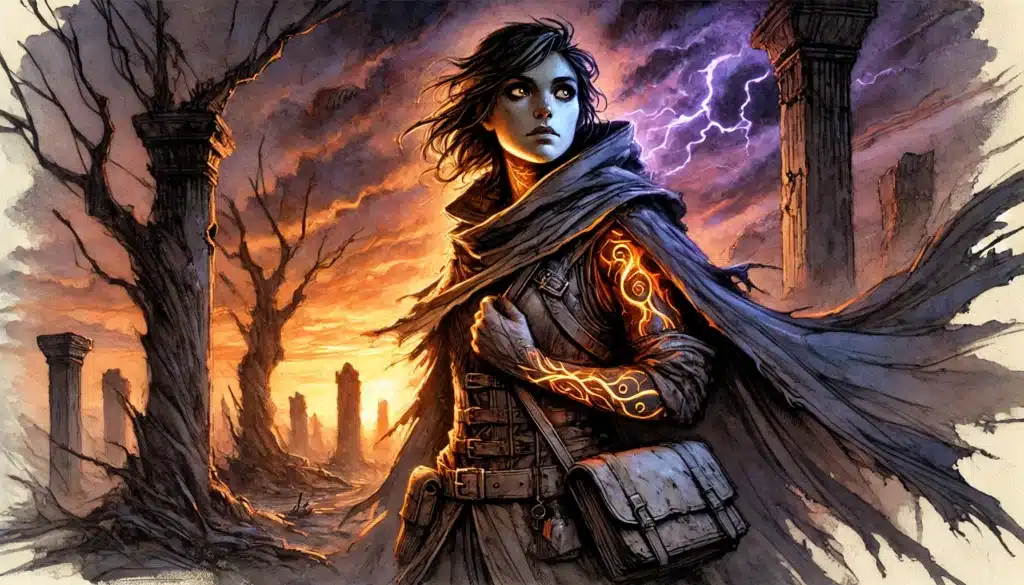
Final Thoughts on Backstory Integration
Instead of viewing generated backstories as a logistical headache, treat them as the gifts they are—a chest of narrative tools that, if curated and set wisely, can elevate an ordinary campaign into something unforgettable. Start from a place of curiosity. Ask not “how will I make all these pieces fit?” but “which threads can deepen the campaign’s heart?” Every origin, no matter how random, is a chance to enrich your world.
The transformation happens in the details. With thoughtful reading, skillful adaptation, and a sense of collaborative play, DMs can spin even the wildest backstory into legend. Player-generated content, whether deliberate or algorithmic, becomes fuel for plot twists, world-shaking prophecies, or deeply personal quests willingly shared with the group.
Remember: immersion and agency aren’t competing interests. The campaign’s narrative coherence grows stronger when each player sees themselves reflected in its mysteries and consequences. Well-paced reveals, balanced collaboration, and respect for player ownership are the secret formula for keeping stories alive.
⚔️ Fantasy RPG Random Tables Books
Make life as a Gamemaster easier…
If you play Dungeons & Dragons, Pathfinder, or other fantasy RPGs, this
RPG random tables series
is packed with encounters, NPCs, treasure, and more. Available in eBook or print—either way, you’ll have a wealth of adventure ideas at your fingertips.
Make it a practice to revisit every backstory as the campaign evolves, searching for opportunities to integrate, retcon, or let a player’s past echo through the world. Think of it not as a burden to fit in, but as an opportunity to make your world feel reactive, dynamic, and meaningful at every turn.
In the end, this process is about more than “using up hooks”—it’s about weaving a living, breathing tapestry where every character, no matter how randomly generated, becomes essential to the story’s heartbeat.


